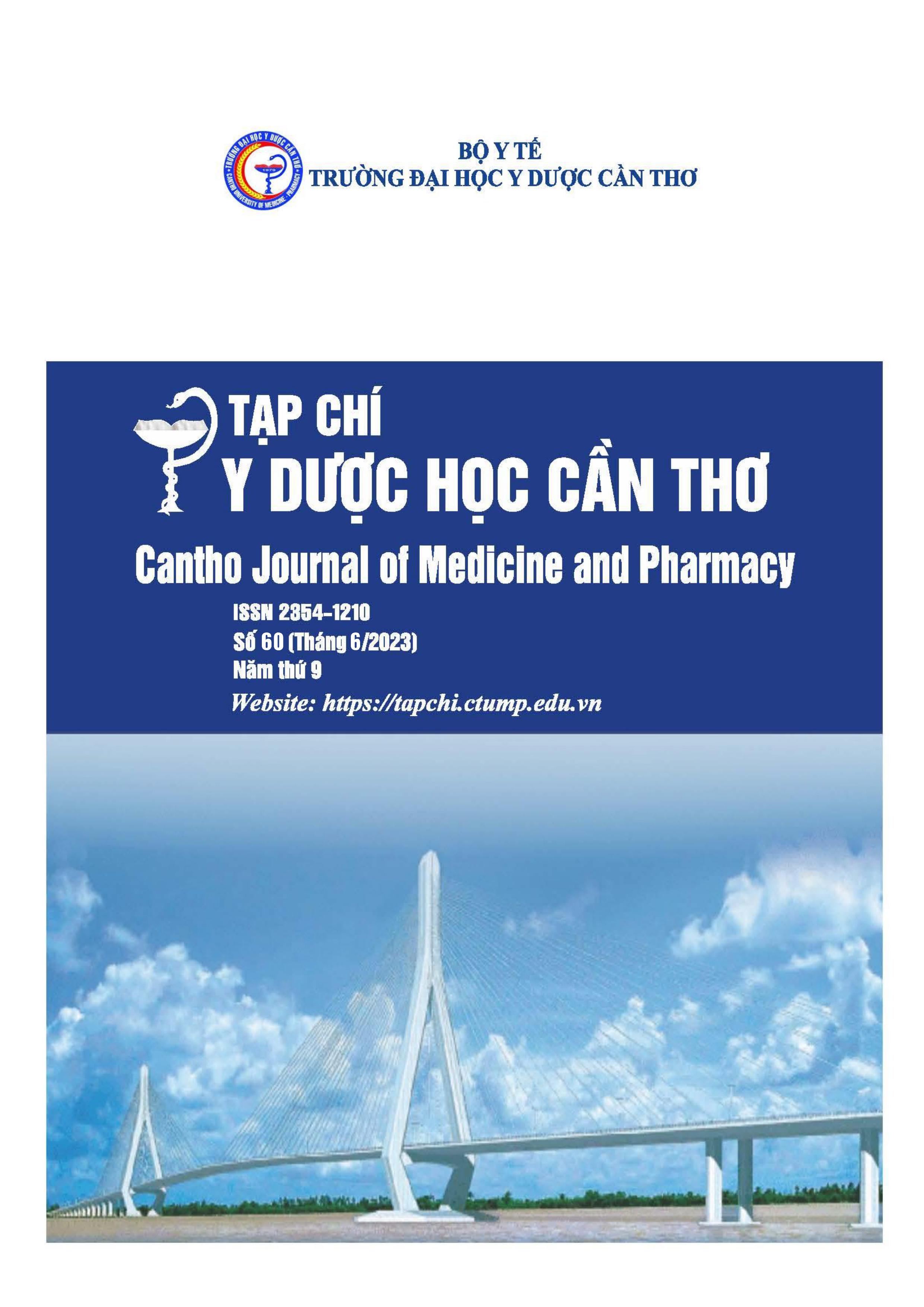STUDY OF MORPHOLOGICAL SIGNIFICANTLY CORONARY ARTERY STENOSIS BEFORE PERCUTANEOUS CORONARY INTERVENTION USING OPTICAL COHERENCE TOMOGRAPHY (OCT) IN KIEN GIANG GENERAL HOSPITAL
Main Article Content
Abstract
Background: Optical coherence tomography is a high-resolution imaging modality that can lead to determine accurately lesions morphology, length, proximal and distal reference diameter. Objectives: To determine injuries morpholgy, length, proximal and distal lesion reference diameter. Methods: A discriptive study from April 2022 to May 2023 in Kien Giang General Hospital, all patients with significant coronary artery narrowing that need percutaneous coronary intertervention were enrolled. Results: In total, 28 lesions in 27 patients were analyzed. Mean age 63.5 ± 2.26, with 33.33% female. The rate of coronary lesions morphology comprised of calcified plaque was 71.42%, lipid plaque was 32.14%, fibrous plaque was 57.14%, red thrombus was 10.71%, white thrombus was 0%, and dissection was 21.43%. Mean lesions length was 39.43 ± 3.71mm. Mean distal and proximal reference diameter was 2.85 ± 0.98mm and 3.62 ± 0.12mm, respectively. Conclusions: Percutanous coronary intervention using optical coherence tomography to help to determine coronary artery lesion morphology, lesion length and lesion reference diameter. Optical Coherence Tomography also helped to find a precise PCI strategy such as stent selection, balloon selection and other supporting equipments.
Article Details
Keywords
Optical coherence tomography, Intravascular ultrasound, Percutaneous coronary intervention
References
2. Osborn, E.A., et al., Safety and efficiency of percutaneous coronary intervention using a standardised optical coherence tomography workflow. Eurointervention: Journal of Europcr in Collaboration with the Working Group on Interventional Cardiology of the European Society of Cardiology. 2023. 18(4), 1178-1187, doi: 10.4244/EIJ-D-22-00512
3. Prati, F., et al., Suboptimal stent deployment is associated with subacute stent thrombosis: optical coherence tomography insights from a multicenter matched study. From the CLI Foundation investigators: the CLI-THRO study. American heart journal. 2015. 169(2), 249-256, doi: 10.1016/j.ahj.2014.11.012.
4. Van Zandvoort, L.J., et al., Predictors for clinical outcome of untreated stent edge dissections as detected by optical coherence tomography. Circulation: Cardiovascular Interventions. 2020. 13(3), e008685, doi: 10.1161/CIRCINTERVENTIONS.119.008685
5. Ali, Z.A., et al., Optical coherence tomography compared with intravascular ultrasound and with angiography to guide coronary stent implantation (ILUMIEN III: OPTIMIZE PCI): a randomised controlled trial. The Lancet. 2016. 388(10060), 2618-2628, doi: 10.1016/S01406736(16)31922-5.
6. Buccheri, S., et al., Clinical outcomes following intravascular imaging-guided versus coronary angiography–guided percutaneous coronary intervention with stent implantation: a systematic review and Bayesian network meta-analysis of 31 studies and 17,882 patients. JACC: Cardiovascular Interventions, 2017. 10(24), 2488-2498, doi: 10.1016/j.jcin.2017.08.051.
7. Jones, D.A., et al., Angiography alone versus angiography plus optical coherence tomography to guide percutaneous coronary intervention: outcomes from the Pan-London PCI Cohort. JACC: Cardiovascular Interventions. 2018. 11(14), 1313-1321, doi: 10.1016/j.jcin.2018.01.274.
8. Fujino, A., et al., A new optical coherence tomography-based calcium scoring system to predict stent underexpansion. EuroIntervention: journal of EuroPCR in collaboration with the Working Group on Interventional Cardiology of the European Society of Cardiology. 2018. 13(18): p. e2182-e2189, doi: 10.4244/EIJ-D-17-00962.


